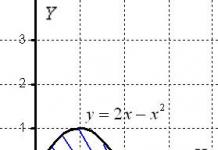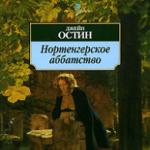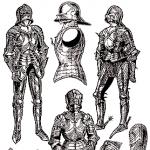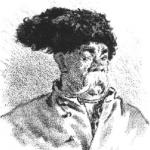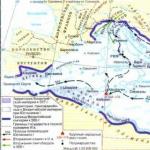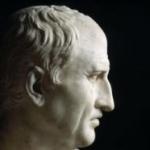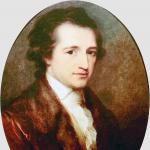At the very end of the 1540s. A circle of close associates formed around the young king, which was called the government of the Chosen Rada (Diagram 62). Its de facto leader was the nobleman A.F., who was of humble origin. Adashev. The head of the Russian Orthodox Church, Metropolitan Macarius, and the priest of the Annunciation Cathedral, Sylvester, had a great influence on the tsar. Princes D. Kurlyaev, A. Kurbsky, M. Vorotynsky, and clerk I. Viskovaty took part in the work of the Elected Rada. The elected Rada carried out a number of important changes in the life of the country aimed at strengthening the centralized state.
Scheme 62
It was during the reign of the Elected Rada in 1549 that an important step was taken in the formation of an estate-representative monarchy - the first Zemsky Sobor in Russian history convened. This became the name for the meetings periodically assembled by the tsar to resolve and discuss the most important issues of the state’s domestic and foreign policy. The Zemsky Sobor of 1549 considered the problems of abolishing “feedings” and suppressing the abuses of governors, so it was called the Council of Reconciliation.
During this period, profound changes took place in the system of the state apparatus. The Government of the Elected Rada began the formation of sectoral management bodies. They were distant prototypes of modern ministries and were called orders, and their employees were clerks and clerks. Petition, local, and zemstvo orders were among the first to be formed.
In 1550, a new Code of Law of the Russian State was adopted. The very structure of this important document speaks of the rapid pace of development of the state and legal system in the 15th-16th centuries. The articles of the Code of Law of 1550 are more clearly separated from one another than the articles of the Code of Law of 1497. Legal norms were added to the first articles of the previous Code of Law, defining the punishment of officials for unjust trials and bribery. The judicial powers of the royal governors were limited. Cases of robbers were transferred to the jurisdiction of provincial elders. The Code of Laws contained instructions on the activities of orders. A number of his articles concerned the social sphere. Here the right of the peasant transition on St. George’s Day was confirmed. The Code of Law of 1550 introduced a significant restriction on the enslavement of children of slaves. A child born before his parents were enslaved was recognized as free.
The principles of local government were radically changed. In 1556, the “feeding” system was abolished throughout the state. Administrative and judicial functions were transferred to provincial and zemstvo elders.
The Service Code adopted by the government regulated the military service of feudal lords. A significant restructuring of the armed forces began. A cavalry army was formed from service people (nobles and children of boyars). In 1550, a permanent streltsy army was created. Infantrymen armed with firearms began to be called archers. The artillery was also strengthened. From the total mass of service people, a “chosen thousand” was formed: it included the best nobles endowed with lands near Moscow.
Tax policy was determined by the introduction of a unified system of land taxation - the “big Moscow plow”. The size of tax payments began to depend on the nature of land ownership and the quality of the land used. Secular feudal lords, landowners and patrimonial owners received greater benefits compared to the clergy and state peasants.
A major role in strengthening Russian statehood was played by the outstanding church leader Macarius, who served in 1542-1563. Russian metropolitan. In the 1540s he convened church councils at which issues regarding the canonization of Russian saints were decided. In February 1551, under the leadership of Macarius, a council was convened, which was called the Stoglavoy, since its decisions were set out in 100 chapters. The Council discussed a wide range of issues: church discipline and the morality of monks, enlightenment and spiritual education, the appearance and standards of behavior of a Christian. The unification of the rituals of the Russian Orthodox Church was especially important.
The reform activities of the Elected Rada lasted about 10 years. Already in 1553, disagreements between the king and his entourage began. This year, due to Ivan’s dangerous illness, the question of succession to the throne arose. Not hoping to survive, the king bequeathed the throne to his infant son Dmitry. Many of the courtiers refused to swear allegiance to the baby. Ivan's cousin, Prince Vladimir Andreevich Staritsky, was nominated as a candidate for the throne. Sylvester and many other members of the Chosen Rada at the decisive moment betrayed the king and went over to the side of his opponents. Contrary to everyone's expectations, Tsar Ivan recovered. He announced the forgiveness of his relative and associates.
The reason for the renewal of the conflict was the death of Queen Anastasia in 1560. Members of the Chosen Council were accused of killing the king's beloved wife with evil witchcraft. The recent rulers fell into disgrace. The elected Rada ceased to exist, and reforms were suspended (Diagram 63).
In 1564, Prince Andrei Kurbsky, who had long been considered Ivan’s closest adviser and personal friend, betrayed the tsar and moved to the Poles. From exile, he wrote a letter to his former ruler, full of accusations and reproaches. Ivan the Terrible's response message will become a real manifesto of autocratic power. Both Andrei Kurbsky and Ivan the Terrible had great literary talent.

Scheme 63
Their correspondence, which stretched over many years, is one of the outstanding monuments of Russian literature and social thought of the 16th century.
Popular uprisings showed that the country needs reforms to strengthen statehood and centralize power. Ivan IV embarked on the path of structural reforms.
The nobility expressed particular interest in carrying out reforms. Its original ideologist was the talented publicist of that time, nobleman Ivan Semenovich Peresvetov. Based on the interests of the nobility, I.S. Peresvetov sharply condemned the boyar arbitrariness. He saw the ideal of government in strong royal power, based on the nobility. “A state without a thunderstorm is like a horse without a bridle,” believed I.S. Peresvetov.
The chosen one is glad. Around 1549, a council of people close to him, called the Chosen Rada, formed around the young Ivan G. Representatives of various strata of the ruling class participated in the work of the Chosen Rada. Princes D. Kurlyatev, A. Kurbsky, M. Vorotynsky, Moscow Metropolitan Macarius and the priest of the Annunciation Cathedral of the Kremlin (the home church of the Moscow kings), the confessor of the Tsar Sylvester, the clerk of the Ambassadorial Prikaz I. Viskovaty. The composition of the Chosen Rada seemed to reflect a compromise between various layers of the ruling class. The elected council existed until 1560; she carried out transformations called reforms of the mid-16th century.
Political system. In January 1547, Ivan IV, having reached adulthood, was officially crowned king. The ceremony of accepting the royal title took place in the Assumption Cathedral of the Kremlin. From the hands of the Moscow Metropolitan Macarius, who developed the royal crowning ritual, Ivan IV accepted the Monomakh cap and other signs of royal power. From now on, the Grand Duke of Moscow began to be called Tsar.
During the period when a centralized state was taking shape, as well as during interregnums and internal strife, the Boyar Duma played the role of a legislative and advisory body under the Grand Duke, and later under the Tsar. During the reign of Ivan IV, the composition of the Boyar Duma was almost tripled in order to weaken the role of the old boyar aristocracy in it.
A new government body, the Zemsky Sobor, emerged. Zemsky Sobors met irregularly and dealt with the most important state affairs, primarily issues of foreign policy and finance. During the interregnum, new kings were elected at Zemsky Sobors. According to experts, more than 50 Zemsky Sobors took place; The last Zemsky Sobors met in Russia in the 80s of the 17th century. They included the Boyar Duma. The consecrated cathedral is representatives of the highest clergy; Representatives of the nobility and the top of the settlement were also present at the meetings of the Zemsky Sobors. The first Zemsky Sobor was convened in 1549. It decided to draw up a new Code of Law (approved in 1550) and outlined a reform program.
Even before the reforms of the mid-16th century. certain branches of government, as well as the management of individual territories, began to be entrusted (“ordered,” as they said then) to the boyars. This is how the first orders of institutions appeared that were in charge of branches of public administration or individual regions of the country. In the middle of the 16th century. There were already two dozen orders. Military affairs were managed by the Rank Order (in charge of the local army). Pushkarsky (artillery), Streletsky (streltsy). Armory Chamber (Arsenal). Foreign affairs were managed by the Ambassadorial Prikaz, finances were managed by the Grand Parish Prikaz; state lands distributed to nobles, Local Prikaz, serfs Serf Prikaz. There were orders that were in charge of certain territories, for example, the order of the Siberian Palace ruled Siberia, the order of the Kazan Palace ruled the annexed Kazan Khanate.
At the head of the order was a boyar or clerk, a major government official. The orders were in charge of administration, tax collection and the courts. As the tasks of public administration became more complex, the number of orders grew. By the time of Peter the Great's reforms at the beginning of the 16th century. there were about 50 of them. The design of the order system made it possible to centralize the management of the country.
A unified local management system began to take shape. Previously, the collection of taxes there was entrusted to the feeding boyars; they were the actual rulers of individual lands. All funds collected in excess of the required taxes to the treasury, i.e., were at their personal disposal. they "fed" by managing the lands. In 1556, feedings were abolished. Local administration (investigation and court in particularly important state affairs) was transferred to the hands of provincial elders (guba okrug), elected from local nobles, zemstvo elders from among the wealthy strata of the Chernososh population where there was no noble land ownership, city clerks or favorite heads in cities. Thus, in the middle of the 16th century. An apparatus of state power emerged in the form of an estate-representative monarchy.
Code of Laws of 1550. The general trend towards centralization of the country necessitated the publication of a new code of laws of Code of Laws of 1550. Taking the Code of Laws of Ivan III as a basis, the compilers of the new Code of Laws made changes to it related to the strengthening of central power. It confirmed the right of peasants to move on St. George’s Day and increased the payment for the “elderly”. The feudal lord was now responsible for the crimes of the peasants, which increased their personal dependence on the master. For the first time, penalties were introduced for bribery of government officials.
Even under Elena Glinskaya, a monetary reform was launched, according to which the Moscow ruble became the main monetary unit of the country. The right to collect trade duties passed into the hands of the state. The population of the country was obliged to bear the tax, a complex of natural and monetary duties. In the middle of the 16th century. a single tax collection unit for the entire state, the large plow, was established. Depending on the fertility of the soil, as well as the social status of the owner of the land, the plow amounted to 400-600 acres of land.
Military reform. The core of the army was the noble militia. Near Moscow, the “chosen thousand” of 1070 provincial nobles were planted, who, according to the Tsar’s plan, were to become his support. For the first time, the “Code of Service” was drawn up. A votchinnik or landowner could begin service at the age of 15 and pass it on by inheritance. From 150 dessiatines of land, both the boyar and the nobleman had to field one warrior and appear at the reviews “on horseback, with people and with weapons.”
Stoglavy Cathedral. In 1551, on the initiative of the Tsar and the Metropolitan, a Council of the Russian Church was convened, which was called the Stoglavoy, since its decisions were formulated in one hundred chapters. The decisions of church hierarchs reflected the changes associated with the centralization of the state. The Council approved the adoption of the Code of Law of 1550 and the reforms of Ivan IV. An all-Russian list was compiled from the number of local saints revered in individual Russian lands.
Rituals were streamlined and unified throughout the country. Even art was subject to regulation: it was prescribed to create new works following approved models. It was decided to leave in the hands of the church all the lands acquired by it before the Council of the Hundred Heads. In the future, clergy could buy land and receive it as a gift only with royal permission. Thus, on the issue of monastic land ownership, a line on its limitation and control by the tsar was established.
Reforms of the 50s of the 16th century. contributed to the strengthening of the Russian centralized multinational state. They strengthened the power of the tsar, led to the reorganization of local and central government, and strengthened the military power of the country3.
The reign of Ivan the Terrible was of great importance for Russian history, for the further strengthening of the Russian state and autocratic power. The policy of Ivan IV went through two stages: the reforms of the 50s strengthened
autocratic power limited by estate-representative institutions in the center and locally; then the oprichnina became an attempt to establish an absolute monarchy.
Under the tsar, the “Chosen Rada” was formed (Prince Kurbsky, Alexei Adashev, Metropolitan Macarius, confessor of Ivan IV Sylvester), with the help of which Ivan IV tried to implement the ideas of European absolutism in Russia and present his power as an expression of public interests.
Elected Rada (1549) A reflection of these sentiments was the formation at the court of Ivan IV in 1549 of a new government, called the Elected Rada. It included: princes
The elected Rada was not an official government institution, but for 13 years it ruled on behalf of the Tsar, seeking to carry out thorough structural reforms aimed at the formation of an estate-representative monarchy.
Reforms of the mid-16th century. Zemsky Sobor (1549) The beginning of the reforms was the convening of the first Zemsky Sobor (1549) - an advisory body, which included representatives of the nobility, clergy, merchants, and townspeople. At the Zemsky Sobor, issues of foreign policy and finance were discussed, and complaints were heard. The Council decided to create a new one to replace the outdated Code of Laws of 1497 and formulated a reform program.
1) Reform of central government bodies. As a result of this reform, I will create a new system of central government bodies - orders, specialized by type of activity. By the middle of the 16th century. There were about 20 orders in force in Russia. Each order was headed by a noble boyar, to whom clerks and clerks were subordinate. The orders were in charge of tax collection and courts. Subsequently, with the increasing specialization of the civil service, the number of orders also increased.
2) The reform of legislative norms led to the creation of the Code of Law of 1550, which confirmed the right of peasants to transfer from one feudal lord to another only on St. George’s Day and increased the payment for the “elderly”.
The general trend towards centralization of the country led to changes in the taxation system, which was also legally enshrined in the Code of Laws of 1550. A single tax collection unit for the entire state was established - a large plow.
3) Reform of the local government system. In 1556 the feeding system was abolished. Service people began to receive remuneration in the form of assistance, which was allocated by a centralized fund. According to the provincial reform, government and judicial functions were assigned to provincial elders, elected from local nobles. This reform ensured an influx of additional funds into the treasury and strengthened the position of the nobility in the local administrative apparatus.
4) Military reform. In 1550, a permanent Streltsy army was created from the pishchalniks in Moscow. The king's personal security was provided by a special detachment of 3,000 people. By the end of the 16th century. The number of Streltsy troops reached 25 thousand people. The army was divided into Moscow and city orders. Streltsy were obliged to participate in hostilities, engage in military training in peacetime, and perform guard duty. By the end of the 16th century. The Russian army exceeded 100 thousand people. The reforms carried out strengthened the country's armed forces.
5) Church reforms. At the Stoglavy Council, so named because its decisions were formulated in 100 chapters (1551), important decisions were made that reflected changes in the socio-political situation in the Russian state: reforms of the Elected Rada were approved;
The unification of saints, religious rituals, and canons was carried out;
Measures were taken to limit monastic land ownership and royal control was established over monastic possessions.
Results of reforms:
Reforms of the 50s of the 16th century. had the following results:
The centralization of the state and the personal power of the king increased;
The system of central and local government has become clearer and more effective;
The country's military power has grown;
There was further enslavement of the Russian peasantry.
Expansion of Russian territory
By the end of the 16th century. The territory of Russia has almost doubled compared to the middle of the century. It included the lands of the Kazan, Astrakhan and Siberian Khanates, Bashkiria. The development of fertile lands in the south of the country was underway. Attempts were made to reach the Baltic Sea. Compared to the middle of the 15th century. The territory of Russia during the reign of Ivan 1U increased more than 10 times. With the inclusion of the lands of the Volga region, the Urals, and Western Siberia, the multinational composition of the country further strengthened. Kazan was taken by storm on October 1, 1552.
4 years later, in 1556, Astrakhan was annexed, in 1557 - Chuvashia and most of Bashkiria.
The Levon War lasted 25 years and at the beginning was accompanied by victories of Russian troops. A total of 20 cities were taken. The order collapsed. His lands were transferred to Poland, Denmark and Sweden. A truce was concluded. In the 11th century The territory of Russia expanded due to the inclusion of new lands of Siberia, the Southern Urals and Left Bank Ukraine, and the further development of the Wild Field. The borders of Russia are from the Dnieper to the Pacific Ocean and from the White Sea to the possessions of the Crimean Khan, the North Caucasus and the Kazakh steppes. Geographical discoveries of Russian researchers also expanded the borders of Russia. In 1648, Dezhnev discovered the strait between Alaska and Chukotka. In the middle of the century, Khabarov subjugated the lands along the Amur River to Russia. Many Siberian cities were founded: Yeniseisk, Krasnoyarsk, Bratsk, Yakutsk, Irkutsk.
The reforms of the Chosen Rada became an overdue, necessary measure in the socio-political and economic life of the Russian state in the middle of the 17th century.
Formation of the Chosen Rada
In 1547, a popular riot occurred in Moscow, during which commoners killed a member of the royal family. The uprising was a consequence of the arbitrariness of the boyar rule, which was carried out in previous years, and revealed
the frank need to transform the state apparatus and develop political and legal norms of government in the state. To achieve this goal, an actual unofficial government was created that operated under Ivan the Terrible from 1547 to 1560 - the Elected Rada. The reforms of this government were aimed at creating a high-quality bureaucratic system in the young Moscow kingdom, centralizing power, taking control of the situation throughout the country, and overcoming the remnants of feudal fragmentation. This government included some boyars, a number of nobles (who at that time were the courtyard entourage of the tsar and the boyars), clergy and some government officials. Among them were confessor Sylvester, Prince Andrei Kurbsky, clerk Viskovaty, Metropolitan Macarius, nobleman Aldashev and other prominent figures of their time. However, the full composition of this body is unknown to us. Apparently, it did not have an exact number and was a situational meeting of people close to the tsar who performed the role of an anti-crisis government.

Reforms of the Chosen Rada under Ivan the Terrible
The main measures of this government's activities were the following:

Oprichnina and the fall of the Chosen Rada
Over time, disagreements between the king and the aristocracy grew. The reason for this was both personal hostility (which was facilitated by the first wife of Ivan IV) and disagreement regarding the pace of centralization of power. If the tsar sought to achieve the establishment of an absolute monarchy as quickly as possible (the absolutization of royal power was characteristic not only of Russia, but of all of Europe), then the reforms of the Elected Rada were aimed at evolutionary changes. All this led to the fall of the unofficial government and the emergence of the notorious guardsmen, who acted using simpler and more radical methods to strengthen the tsarist power and actually carried out terror against the boyars.
“The Chosen Rada” is a term introduced by Prince A.M. Kurbsky to designate the circle of people who made up the informal government under Ivan the Terrible in 1549-1560. The term itself is found only in the work of Kurbsky, while Russian sources of that time do not give this circle of people any official name.
Creation
The formation of a select circle of people around the tsar occurs after the Moscow events of the summer of 1547: fire, and then the uprising of Muscovites. According to Kurbsky's version, during these events the king came to Archpriest Sylvester, and “threatened the king with a terrible curse from the Holy Scriptures,<...>to<...>stop his riots and moderate his violent temper.”
Compound
The composition of the “Elected Rada” is the subject of debate. Definitely, the priest of the Annunciation Cathedral of the Kremlin, the confessor of the Tsar Sylvester and a young figure from a not very noble family, A.F. Adashev, participated in the “Rada”.
On the other hand, some historians deny the existence of the Elected Rada as an institution led exclusively by the three above-mentioned persons.
Activity
The elected council lasted until 1560. She carried out transformations that were called reforms of the mid-16th century.
Reforms of the Chosen One:
First Zemsky Sobor 1549 - the body of class representation, ensuring the connection between the center and the localities, Ivan IV’s speech from the front: condemnation of the wrong boyar rule, announcement of the need for reforms.
Code of Law 1550 - development of the provisions of the Code of Law of Ivan III, limitation of the power of governors and volosts, strengthening of control of the tsarist administration, a uniform amount of court fees, preservation of the right of peasants to cross on St. George’s Day.
Stoglavy Cathedral 1551 - unification of church rituals, recognition of all locally revered saints as all-Russian, establishment of a strict iconographic canon, demands for improving the morals of the clergy, prohibition of usury among priests.
Military reform 1556 - the Code of Service was adopted: restriction of localism for the period of military operations, in addition to the mounted local militia, organization of a standing army - archers, gunners, a unified order of military service.
Formation of the order system.
In 1556, a reform of local government was carried out.
The reforms of the Elected Rada outlined the path to strengthening and centralization of the state and contributed to the formation of an estate-representative state.
Fall of the Chosen Rada
Some historians see the reason for the tsar's disfavor in the fact that Ivan IV was dissatisfied with the disagreements of some members of the Rada with the late Anastasia Zakharyina-Yuryeva, the tsar's first wife. This is also confirmed by the fact that after the death of his second wife, Maria Temryukovna, Ivan the Terrible also carried out executions of those disliked by the queen and accused the boyars of “harassing” (poisoning) Maria.
In 1553, Ivan the Terrible fell ill. The illness was so severe that the question of transfer of power arose in the Boyar Duma. Ivan forced the boyars to swear allegiance to their infant son, Tsarevich Dmitry. But among the members of the Rada, the idea arose to transfer the Moscow throne to the Tsar’s cousin, Vladimir, Prince Staritsky. In particular, Sylvester noted that Vladimir’s quality is that he loves advisers. However, Ivan recovered from his illness, and the conflict, at first glance, was settled. But the king did not forget this story and later used it against Sylvester and Adashev.
The main contradiction was the radical difference in the views of the Tsar and the Rada on the issue of centralization of power in the state (the process of centralization is the process of concentrating state power). Ivan IV wanted to speed up this process. The elected Rada chose the path of gradual and painless reform.

